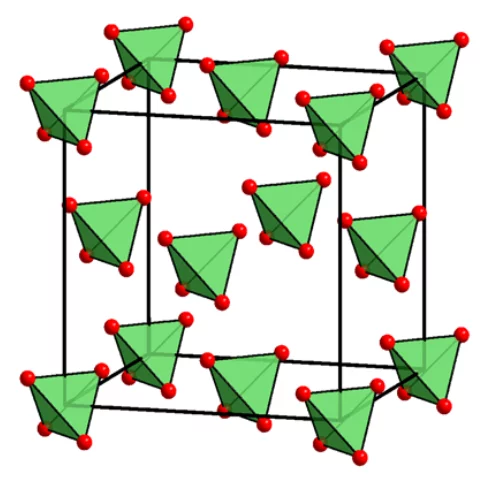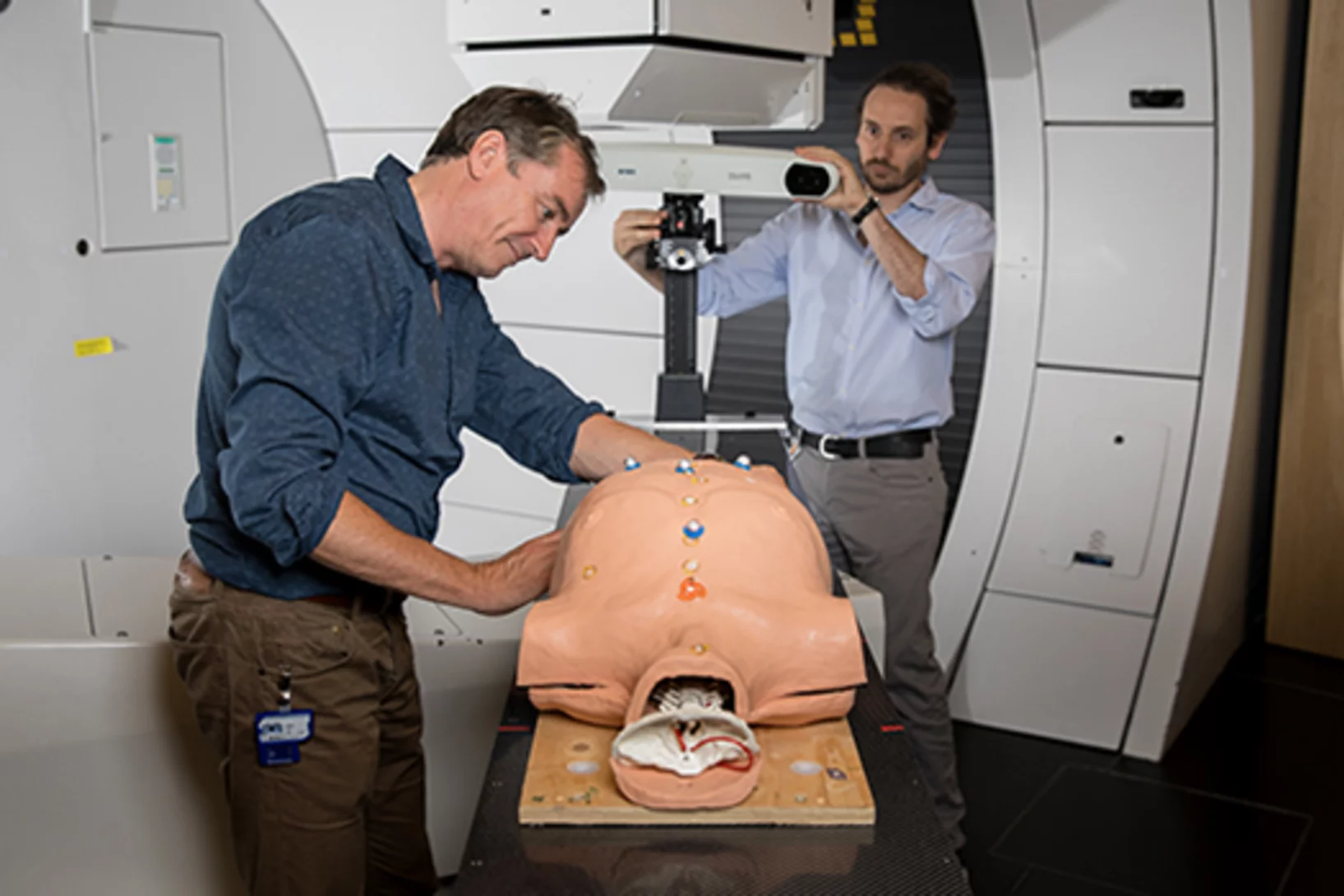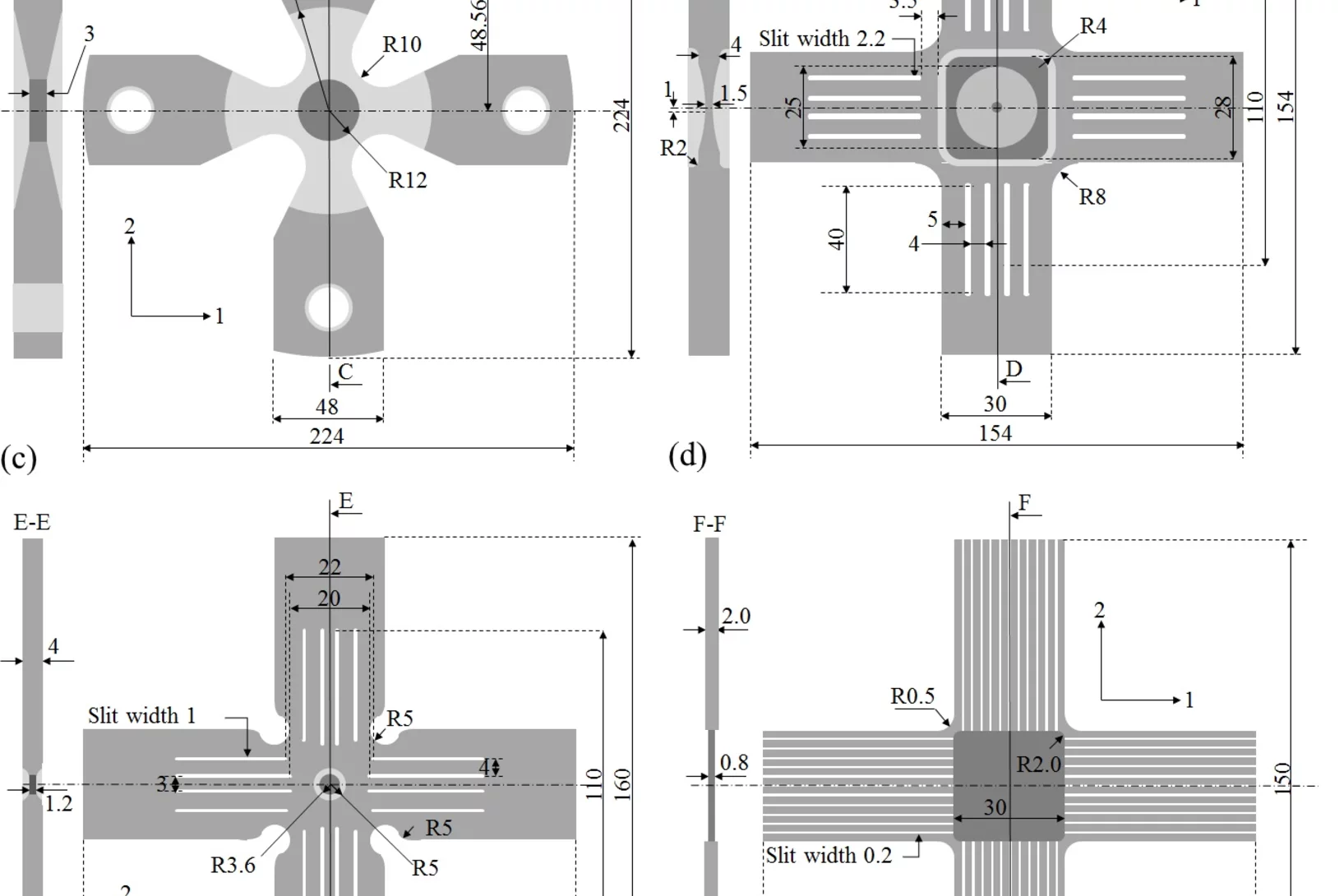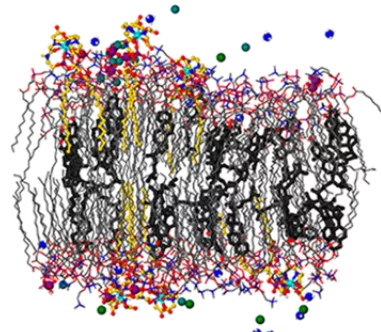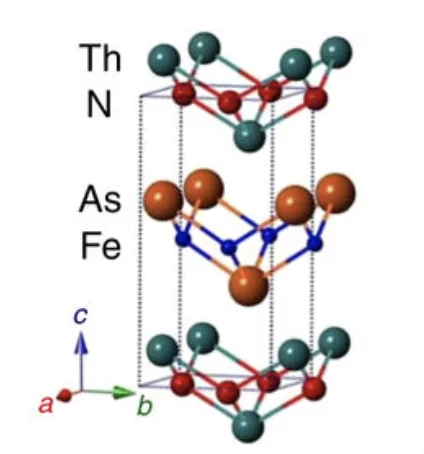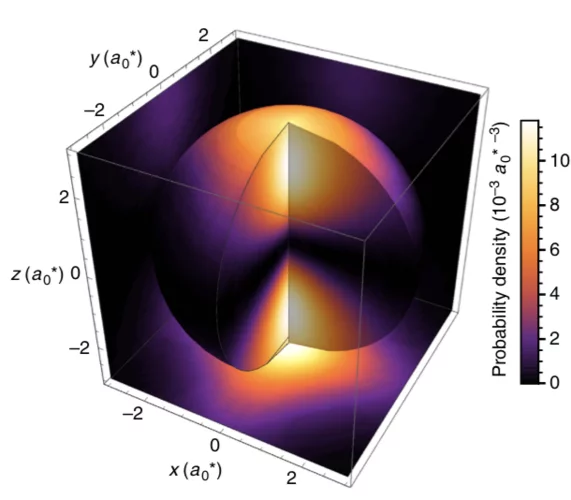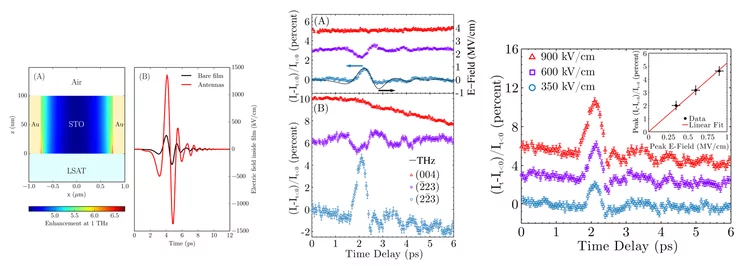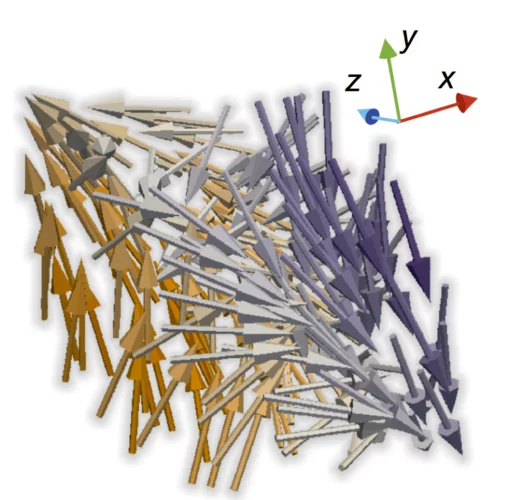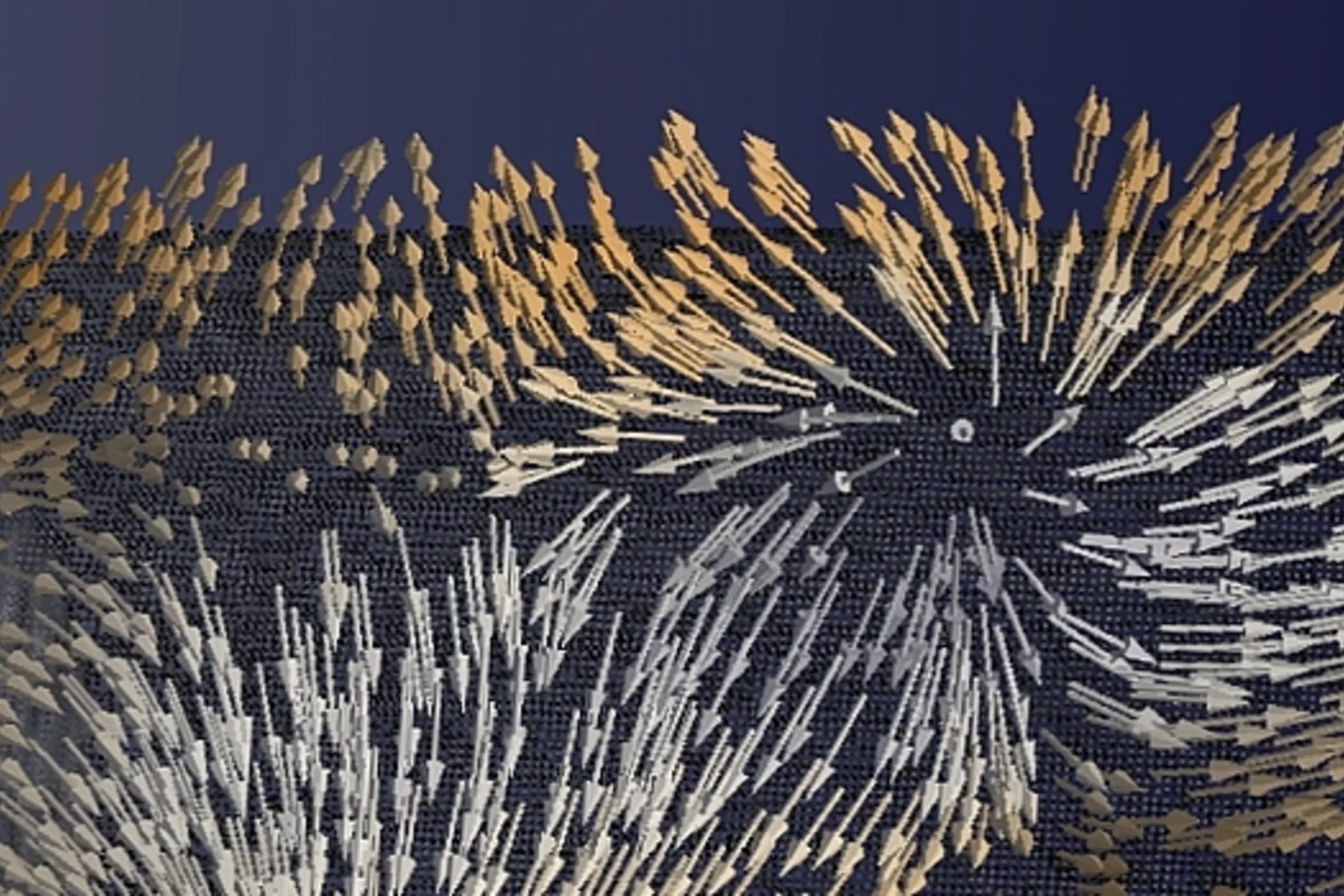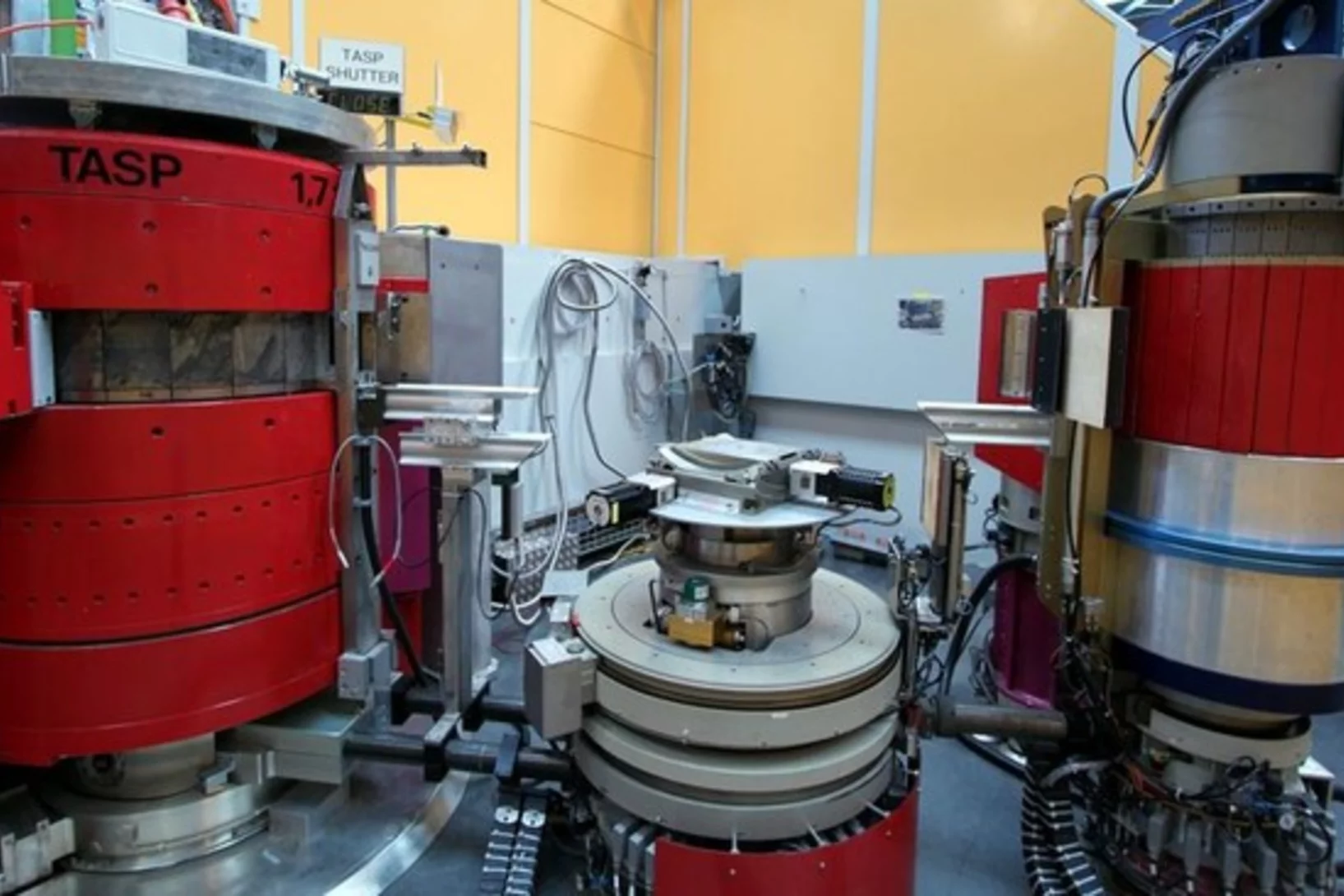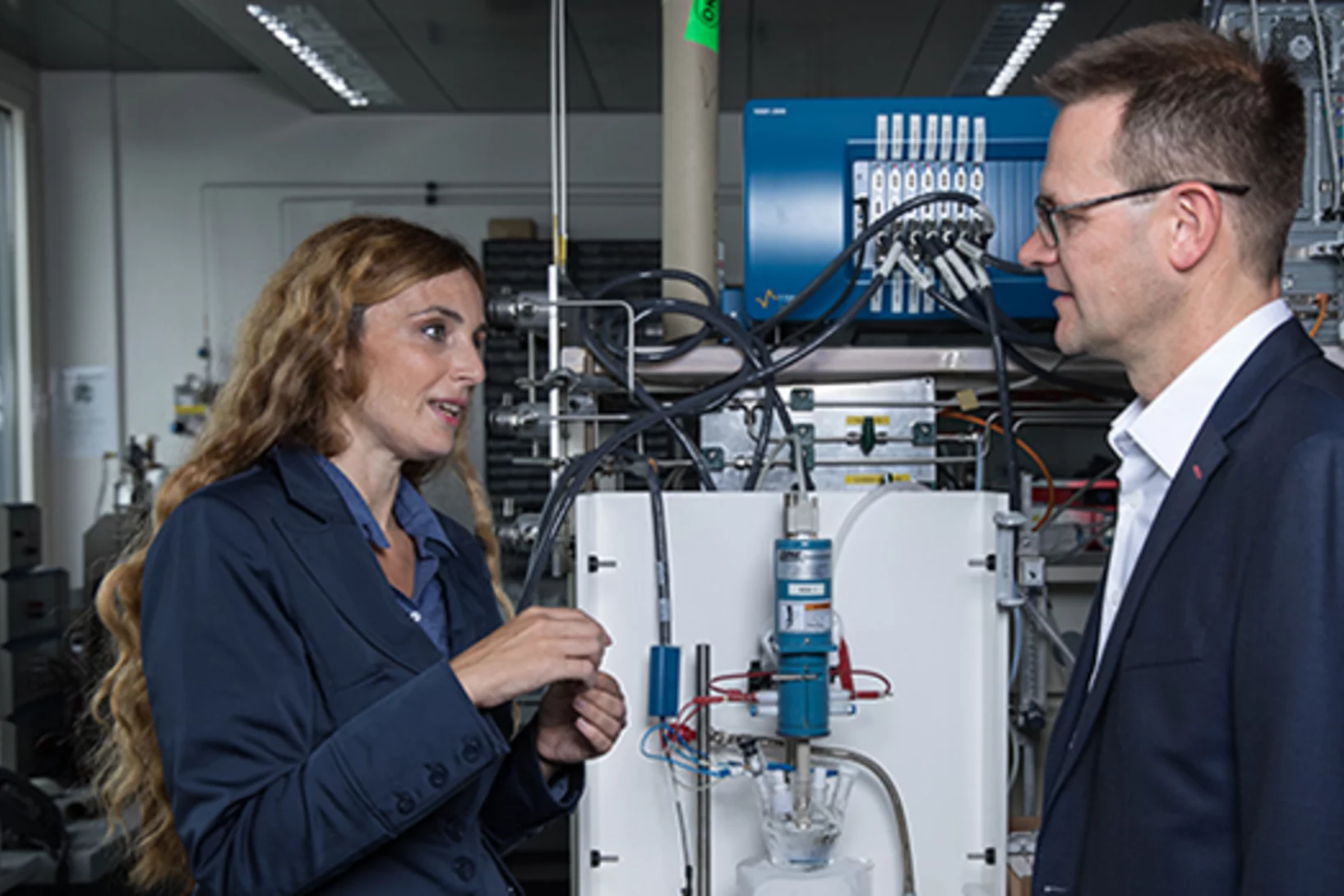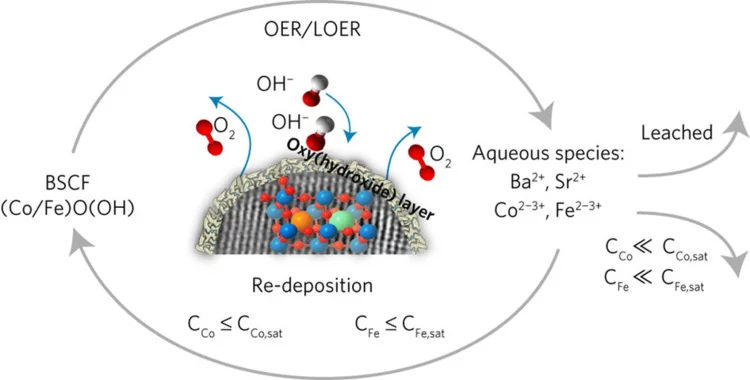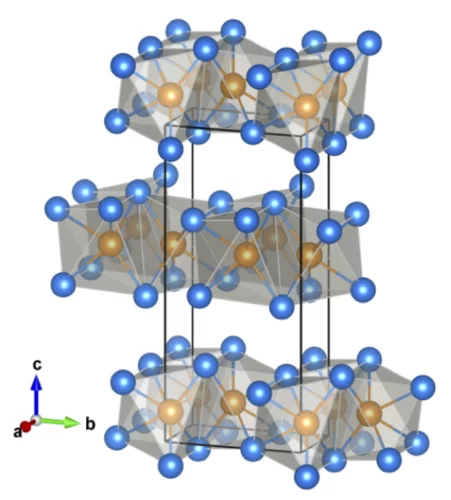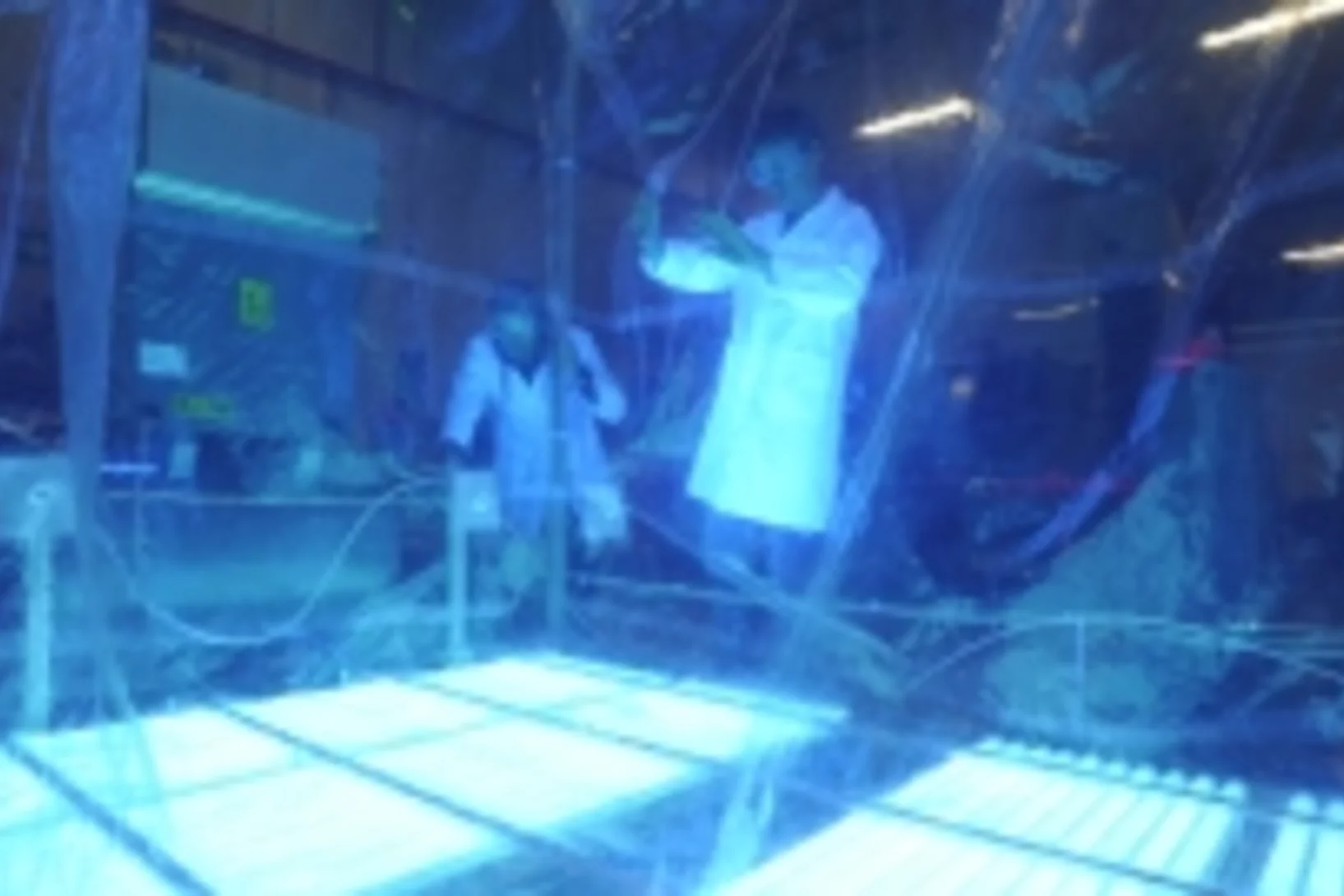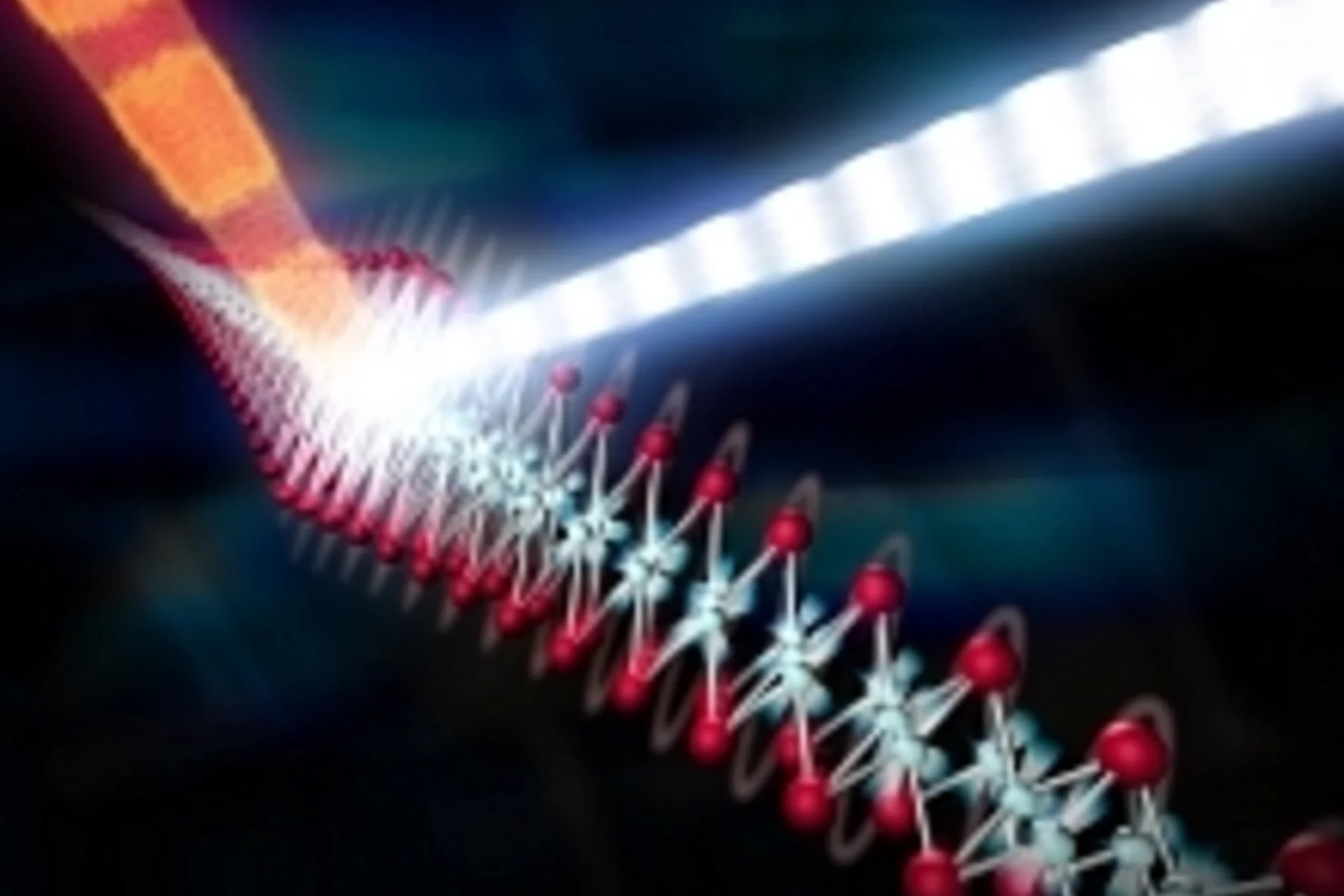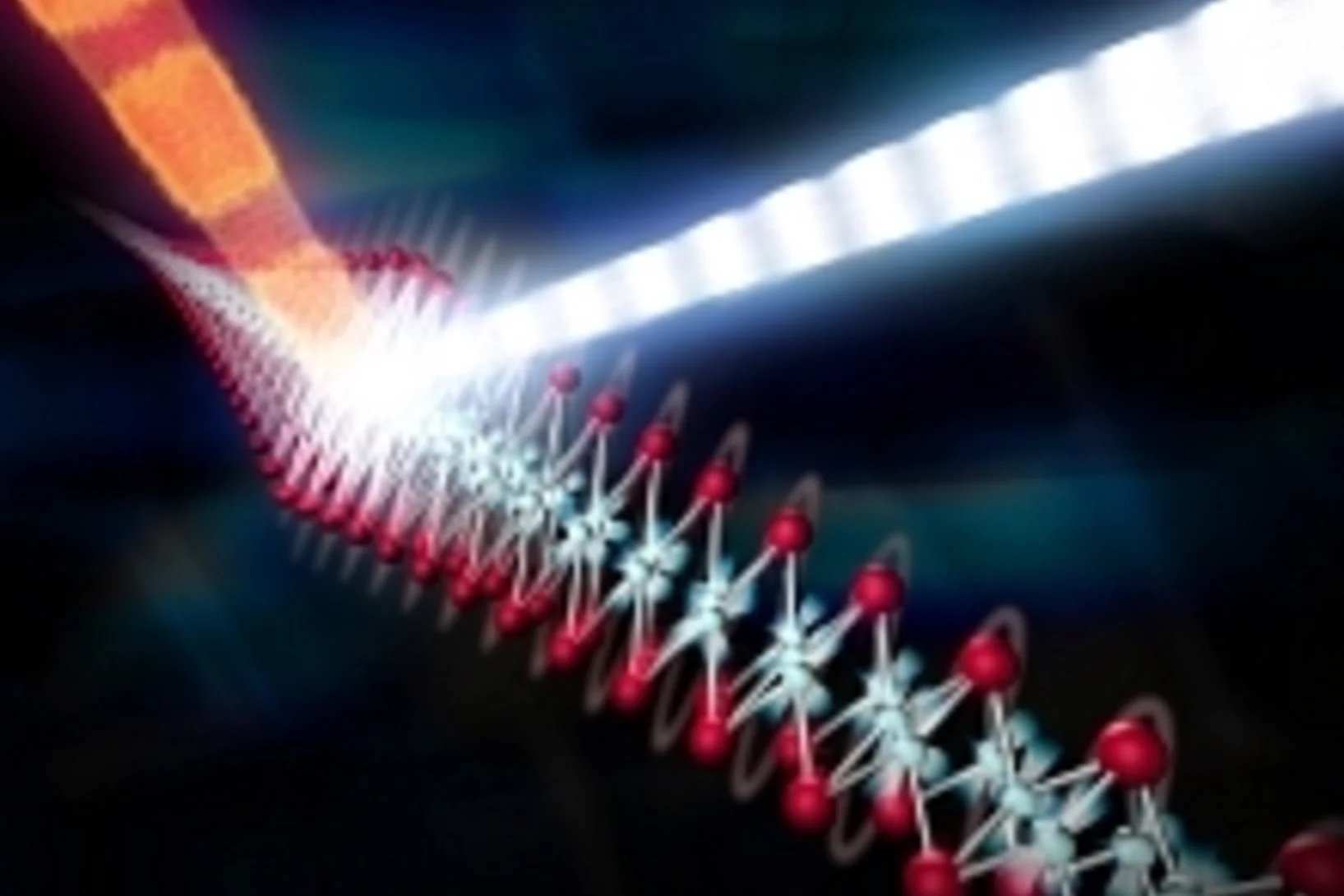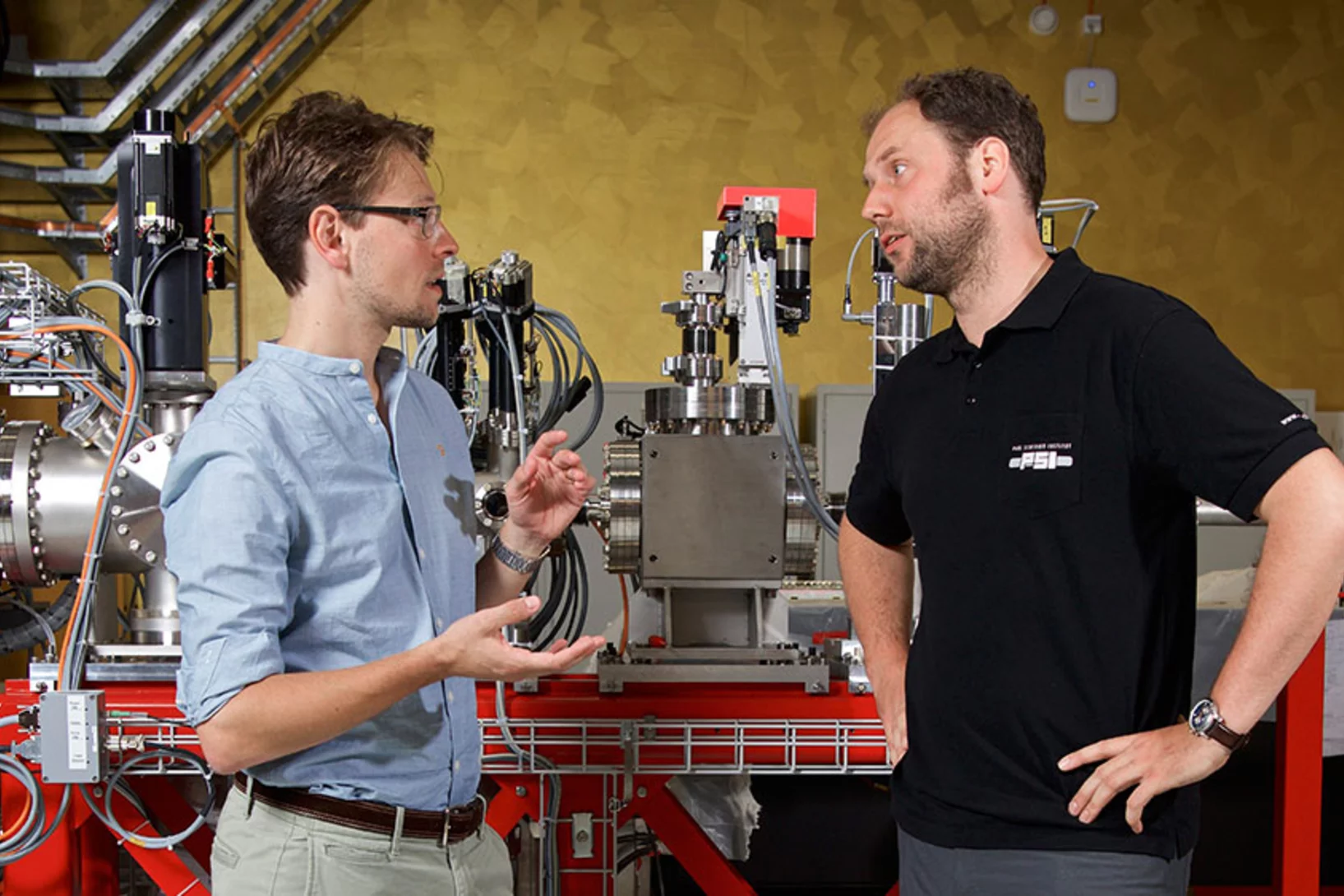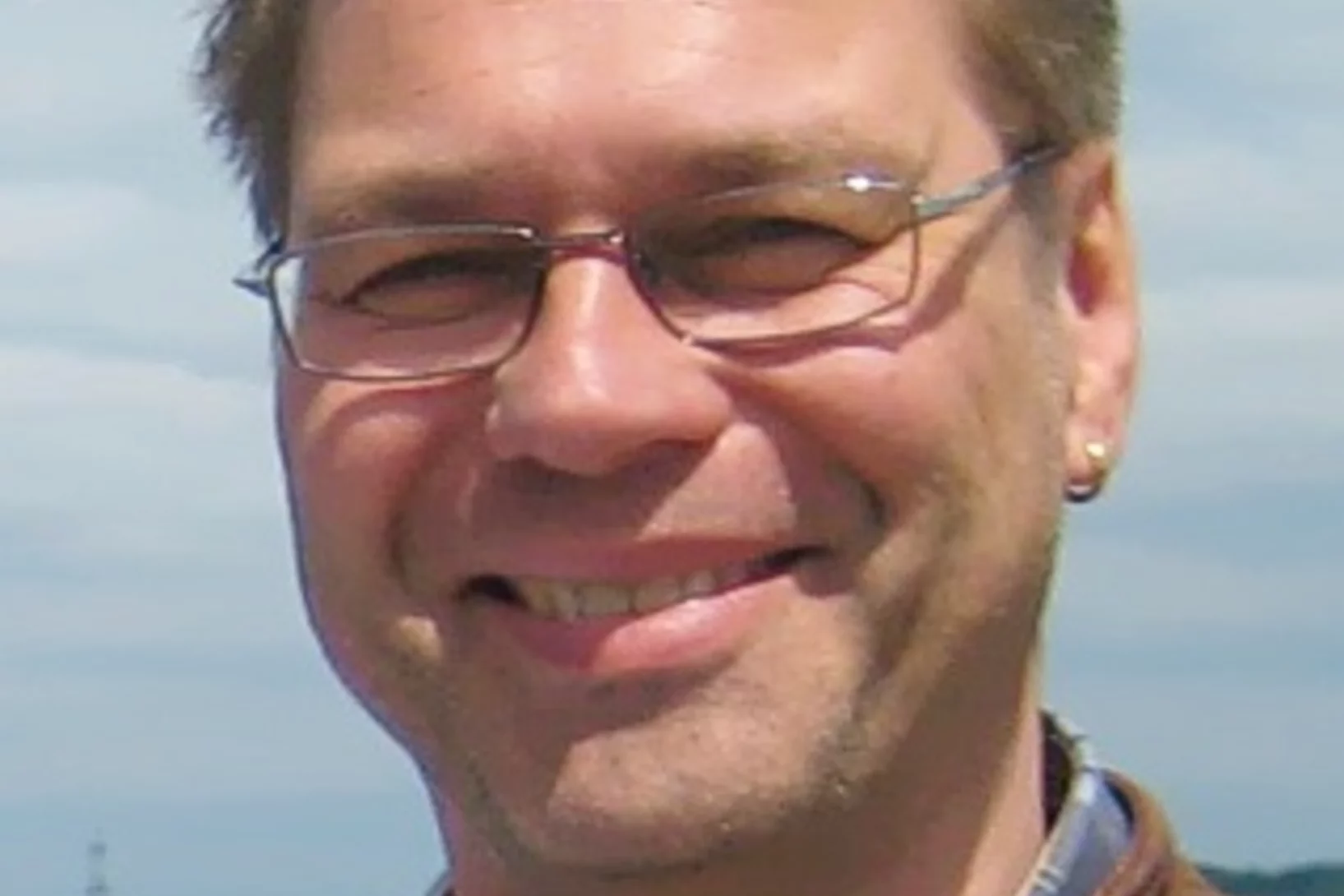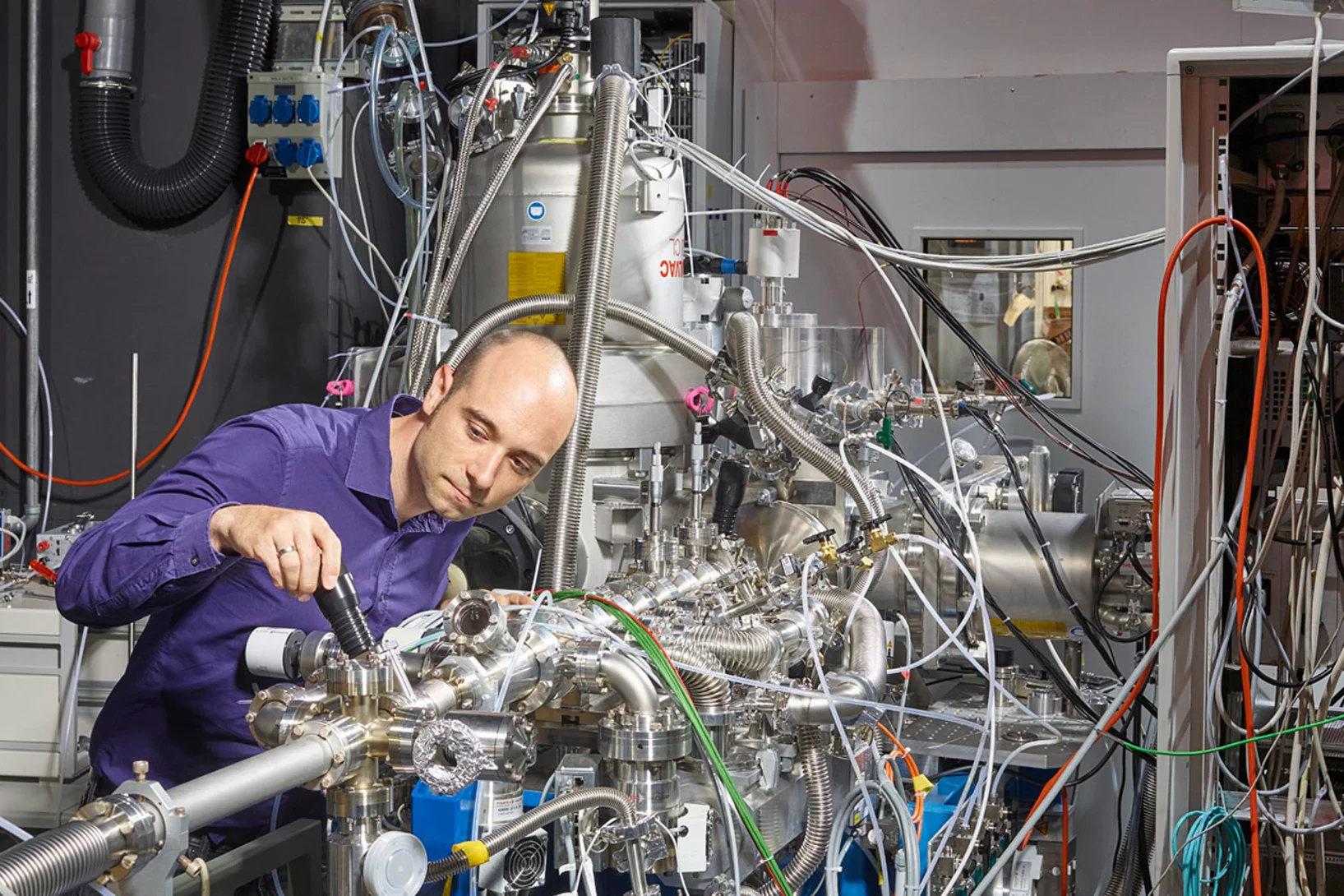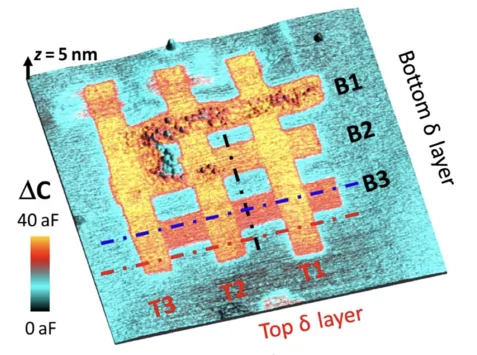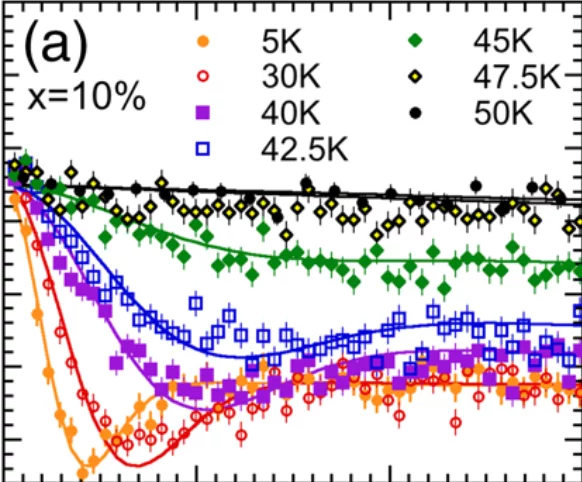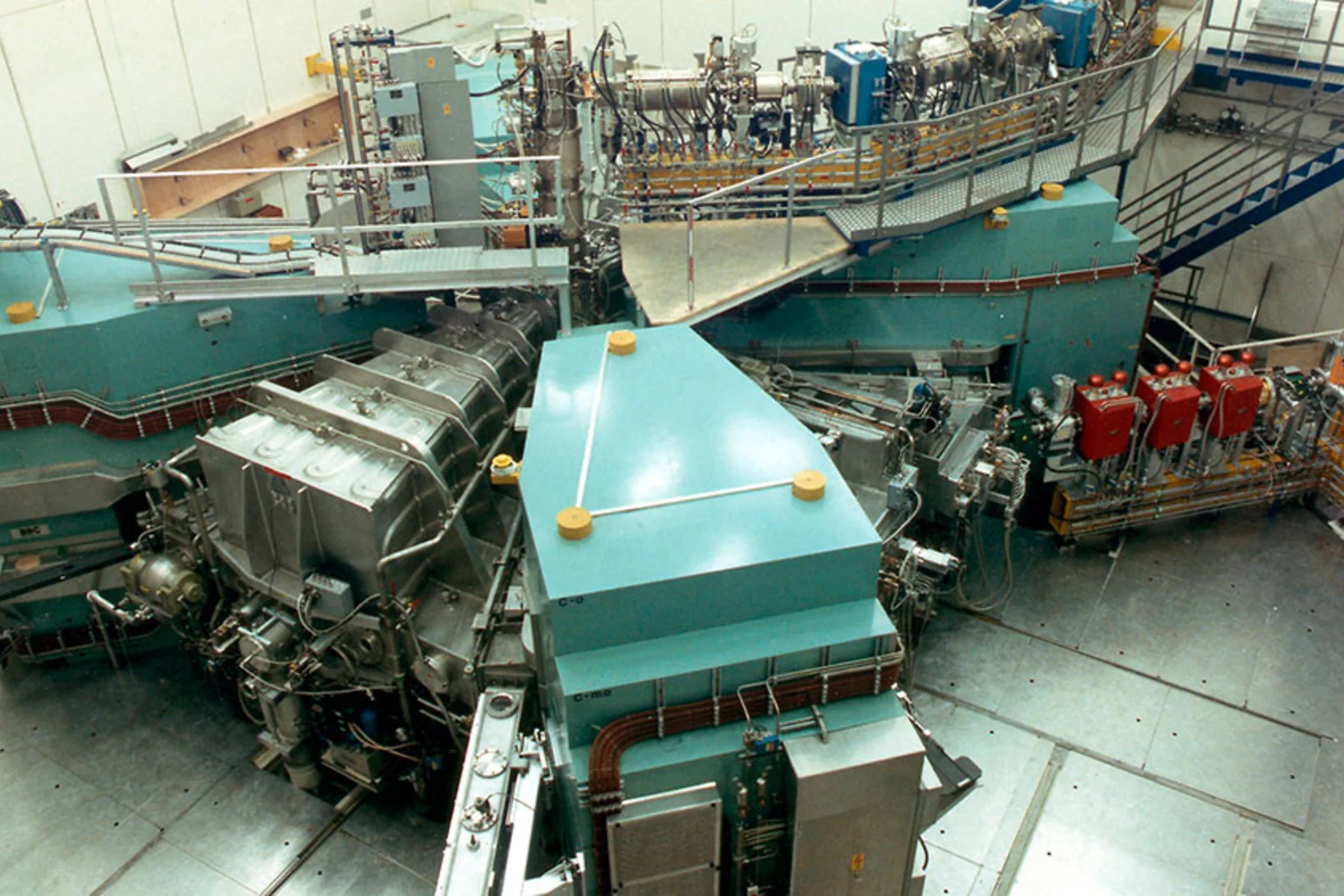Researchers at the Paul Scherrer Institute PSI are looking for answers to essential questions concerning the underlying structures of matter and the fundamental principles of nature. They study the composition and properties of elementary particles – the smallest building blocks of matter – or investigate the structure of biological molecules and how they perform their function. The knowledge gathered in this way opens up new approaches to finding solutions in science, medicine and technology.
Find out more at Overview Fundamentals of Nature
Chemical Imaging to Spy on Malaria Parasites
Unique insights into the adolescence and metabolism of a Malaria parasite in a human red blood cell are obtained by a new chemical imaging methodology – in situ correlative X-ray fluorescence microscopy and soft X-ray tomography.
Equilibrium Skyrmion Lattice Ground State in a Polar Easy-plane Magnet
The skyrmion lattice state (SkL), a crystal built of mesoscopic spin vortices, gains its stability via thermal fluctuations in all bulk skyrmion host materials known to date. Therefore, its existence is limited to a narrow temperature region below the paramagnetic state. This stability range can drastically increase in systems with restricted geometries, such as thin films, interfaces and nanowires.
Testing the Limits for the Patients' Benefit
Proton therapy is already a success story at the Paul Scherrer Institute PSI but researchers remain dedicated to making treatment faster and safer.
Welcome Huanyu Yang
Join me in welcoming Huanyu Yang, our new PhD student in Markus Ammann’s group.
He has a Bachelor degree in Physics and obtained his Master from the University of Rome, “La Sapienza”. The title of his dissertation was “Optical pump-terahertz probe on semiconductors” and the project task was to study the electro-optical properties of several semiconductors by constructing the time-domain and time-resolved spectroscopy with a laser (pulse duration <100 fs), both at equilibrium state and dynamical state.
At PSI, Huanyu Yang will be studying the hydrogen bonding structure at solid and aqueous interfaces with X-Ray photoelectron spectroscopy.
Stresses and Strains in cruciform samples deformed in tension
Cruciform experiments are very useful to study non-proportional strain path change behavior of engineering metals and alloys. This work studies the stress response of 6 prominently used cruciform geometries deformed under tension. Results show that for most of the cruciform samples, the gauge stresses are non-linearly coupled to the applied forces in both arms. Cruciform geometries based on the ISO standard are able to decouple these stresses but negligible gauge plastic strains are reached prior to failure.
Understanding the Enhanced Magnetic Response of Aminocholesterol Doped Lanthanide-Ion-Chelating Phospholipid Bicelles
Cholesterol (Chol-OH) and its conjugates are powerful molecules for engineering the physicochemical and magnetic properties of phospholipid bilayers in bicelles.
High-Tc superconductivity in undoped ThFeAsN
Unlike the widely studied ReFeAsO series, the newly discovered iron-based superconductor ThFeAsN exhibits a remarkably high critical temperature of 30 K, without chemical doping or external pressure. Here we investigate in detail its magnetic and superconducting properties via muon-spin rotation/relaxation and nuclear magnetic resonance techniques and show that ThFeAsN exhibits strong magnetic fluctuations, suppressed below ≈35 K, but no magnetic order.
Coherent superpositions of three states for phosphorous donors in silicon prepared using THz radiation
Superposition of orbital eigenstates is crucial to quantum technology utilizing atoms, such as atomic clocks and quantum computers, and control over the interaction between atoms and their neighbours is an essential ingredient for both gating and readout. A team of researchers including Photon Science division head Gabriel Aeppli has demonstrated THz laser pulse control of Si:P orbitals using multiple orbital state admixtures, observing beat patterns produced by Zeeman splitting. The beats are an observable signature of the ability to control the path of the electron, which implies we can now control the strength and duration of the interaction of the atom with different neighbours. This could simplify surface code networks which require spatially controlled interaction between atoms. The full article can be read in Nature Communications
Moving atoms with enhanced
THz pulses and tracking them with ultrashort x-ray pulses on an XFEL
Controlled motions of atoms using ultrashort electric field pulses allow to manipulated the properties of a material on ultrafast timescales. Here we show how metallic structures can be used to enhance a THz electric field pulse and track the induced atomic motions with ultrashort x-ray pulses emitted by a X-ray free electron laser.
Three-dimensional magnetization structures revealed with X-ray vector nanotomography
In soft ferromagnetic materials, the smoothly varying magnetization leads to the formation of fundamental patterns such as domains, vortices and domain walls. These have been studied extensively in thin films of thicknesses up to around 200 nanometres, in which the magnetization is accessible with current transmission imaging methods that make use of electrons or soft X-rays.
Diving into magnets
For the first time, scientists have made visible the directions of the magnetisation inside a 3D magnetic object. The smallest details in their visualisation were ten thousand times smaller than a millimetre. Among others, the magnetic structure contained one outstanding kind of pattern: magnetic singularities called Bloch points, which up to now were only known in theory.
4-spin plaquette singlet state in the Shastry–Sutherland compound SrCu2(BO3)2
The study of interacting spin systems is of fundamental importance for modern condensed-matter physics. On frustrated lattices, magnetic exchange interactions cannot be simultaneously satisfied, and often give rise to competing exotic ground states. The frustrated two-dimensional Shastry–Sutherland lattice realized by SrCu2(BO3)2 is an important test to our understanding of quantum magnetism.
New quantum state observed in a Shastry–Sutherland compound
Scientists from PSI and the École polytechnique fédérale de Lausanne (EPFL) have shown experimentally, for the first time, a quantum phase transition in strontium copper borate, the only material to date that realizes the famous Shastry–Sutherland quantum many-body model.
Nanomaterial helps store solar energy: efficiently and inexpensively
Efficient electrolysers are needed in order to store sun and wind energy in the form of hydrogen. Thanks to a new material developed by researchers at the Paul Scherrer Institute PSI and Empa, these devices are likely to become less costly and more efficient in the future. Researchers were also able to demonstrate that this new material can be reliably produced in large quantities, showing its performance capability in an electrolysis cell—the main component of an electrolyser.
Nanomaterial helps store solar energy: efficiently and inexpensively
By combining a scalable cutting-edge synthesis method with time-resolved X-ray absorption spectroscopy measurements, it was possible to capture the dynamic local electronic and geometric structure during realistic operando conditions for highly active OER perovskite nanocatalysts.
Three-Dimensional Electronic Structure of the Type-II Weyl Semimetal WTe2
By combining bulk sensitive soft-x-ray angular-resolved photoemission spectroscopy and first- principles calculations we explored the bulk electron states of WTe2, a candidate type-II Weyl semimetal featuring a large nonsaturating magnetoresistance. Despite the layered geometry suggesting a two-dimensional electronic structure, we directly observe a three-dimensional electronic dispersion.
Understanding the reaction mechanism in lignin catalytic fast pyrolysis
Lignin is a major constituent of plants, and may be used as a precursor for fuels and fine chemicals. Catalytic fast pyrolysis of lignin is one of the most promising approaches. By using vacuum ultraviolet synchrotron radiation and threshold photoelectron spectroscopy we could identify elusive intermediates, which are responsible for the formation of phenol and benzene and could thus tackle this reaction mechanism. Mechanistic understanding could enable targeted improvement of production methods in the future, beyond the currently used "cook-and-look" approach.
Gasoline cars produce more carbonaceous particulate matter than modern filter-equipped diesel cars
In contrast to nitrogen oxides, modern gasoline cars emit much more cancerogenic primary soot (black carbon + primary organic aerosol) and lead to more toxic secondary organic aerosol than modern diesel vehicles.
Scientists get first direct look at how electrons ‘dance’ with vibrating atoms
Research experience from California's X-ray free-electron laser benefits SwissFEL. It's the camera that allows researchers to make extremely rapid processes visible: the X-ray free-electron laser. Currently, however, only three sites worldwide—in the US, Japan and South Korea—have facilities capable of carrying out such measurements. Two current articles in Science and Nature Communications co-authored by researchers now at the Paul Scherrer Institute PSI exemplify the kind of outstanding scientific work that can be carried out at such facilities, enabling new insights into the mechanisms of superconductors and magnetic switching in molecules. The measurements were conducted at the Linac Coherent Light Source (LCLS) free-electron laser in California. Press release PSI / Press release SLAC
Scientists get first direct look at how electrons ‘dance’ with vibrating atoms
Scientists at the SLAC National Accelerator Laboratory and Stanford University - one of the leading authors, Simon Gerber, has in the meantime relocated to PSI - have made the first direct measurements, and by far the most precise ones, of how electrons move in sync with atomic vibrations rippling through an quantum material, in the present study an unconventional superconductor, as if they were “dancing" to the same beat.
Research experience from California benefits Swiss X-ray free-electron laser SwissFEL
An X-ray free-electron laser (XFEL) is capable of visualizing extremely fast structural and electronic processes. Pilot experiments will take place at the PSI's Swiss Free-Electron Laser (SwissFEL) from the end of 2017 on. Two current publications in Science and Nature Communications demonstrate the kind of outstanding scientific work that is enabled by such facilities. The work was carried out at the Linac Coherent Light Source (LCLS) in California. Two of the leading authors behind these studies have now relocated to the PSI in order to share their expertise as SwissFEL expands its capabilities.
LUC climbs Furka and Grimsel
This year's excursion exposed us to high-alpine wild flowers. A guided tour on alpine plant ecology at the Alpine Research Station Furka had to be canceled in last minute, and was replaced by hiking the Grimsel area, equipped with plant ecology apps.
Rhea Stewart from the University of St Andrews wins an ISMS Young Scientist Award
Rhea Stewart from the University of St Andrews, UK, has been honoured with an ISMS Young Scientist Award
at the 14th International Conference on Muon Spin Rotation Relaxation and Resonance (μSR2017) in Sapporo, Japan,
for her exceptional oral presentation entitled “Anomalous Meissner Screening Probed using Low Energy Muon Spin Spectroscopy”. The Low Energy µSR
experiments have been performed at the LEM facility of the Swiss Muon Source SµS.
Thomas Prokscha new President of ISMS
Thomas Prokscha from the Laboratory for Muon Spin Spectroscopy LMU and Head of the LEM Group has been announced as the new President of the International Society for μSR Spectroscopy (ISMS)
at the 14th International Conference on Muon Spin Rotation Relaxation and Resonance (μSR2017) in Sapporo, Japan.
Fuel and chemicals from plant waste
Lignin, as a constituent of many plants, accumulates in large quantities and could theoretically be used as a precursor material for production of fuels and chemicals. Researchers at the Paul Scherrer Institute PSI and ETH Zurich have developed a method with which the processes that take place in the catalytic breakdown of lignin can be observed in detail. The knowledge thus gained could enable targeted improvement of production methods in the future.
Nondestructive imaging of atomically thin nanostructures buried in silicon
A team of researchers including Photon Sciences division head Gabriel Aeppli have demonstrated the first non-destructive imaging of atomically thin nanostructures in silicon. Such structures are the building blocks of quantum devices for physics research and are likely to serve as key components of devices for next-generation classical and quantum information processing. Until now, the characteristics of buried dopant nanostructures could only be inferred from destructive techniques and/or the performance of the final electronic device; this severely limits engineering and manufacture of real-world devices based on atomic-scale lithography. In work recently published in Science Advances, the team use scanning microwave microscopy (SMM) to image and electronically characterize three-dimensional phosphorus nanostructures fabricated via scanning tunneling microscope based lithography.
Quantum Griffiths Phase Inside the Ferromagnetic Phase of Ni1-xVx
We study by means of bulk and local probes the d-metal alloy Ni1-xVx close to the quantum critical concentration, xc ≈ 11.6%, where the ferromagnetic transition temperature vanishes. The magnetization-field curve in the ferromagnetic phase takes an anomalous power-law form with a nonuniversal exponent that is strongly x dependent and mirrors the behavior in the paramagnetic phase.
Photonic structure of white beetle wing scales: optimized by evolution
A very thin layer on this beetle’s wings exhibits a complicated structure on the nanoscale that gives them a bright white color. X-ray nanotomography acquired at the Swiss Light Source provides a faithful image of this structure in three dimensions with which scientists can confirm its evolutionary optimization: just enough material for an efficient reflection of white light.
Next Generation Catalysts for Polymer Electrolyte Fuel Cells
Electric vehicles powered by hydrogen polymer electrolyte fuel cells are one option to move towards a low emission transport sector. To decrease the cost of such devices, further research on the various fuel cell components is pursued in academia in industry.
Injector 2: a pre-accelerator for protons
As fundamental building blocks of matter, protons are part of all the things that surround us. At the Paul Scherrer Institute PSI, though, they step out of their usual role and are deployed to generate other particles, namely neutrons and muons, which are then used to study materials. But for that, the protons first have to be accelerated. An important role in this is played by a three-stage accelerator facility, in the middle of which stands the accelerator known as Injector 2.


